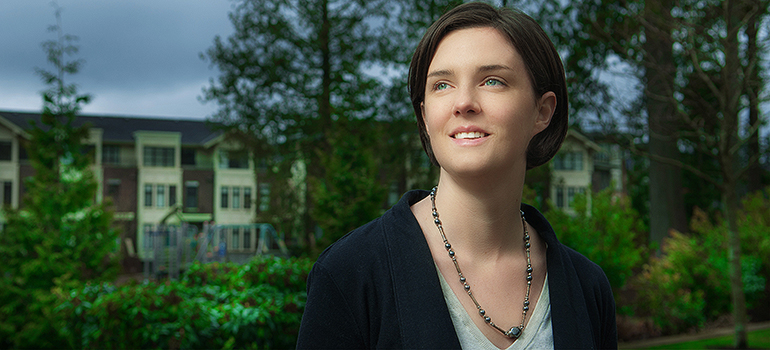Sara Barron wins the world’s largest forestry scholarship
From promoting recovery in hospitals to reducing stress, there is growing evidence that nature plays an important role in our wellbeing. But according to Sara Barron, suburban communities are going to need more than a few tree-lined streets to be effective.
“People are scared of density,” says Barron, who will begin her PhD research in the Faculty of Forestry in May. “But if you integrate trees and natural spaces within dense areas, it makes neighbourhoods more livable.”
Barron is the winner of the Future Forests Fellowship, the world’s largest scholarship for forestry research. She will receive up to $240,000—$60,000 annually for up to four years—to study how urban planners can design or retrofit suburbs to balance natural forest environments with the higher density housing that is required to reduce carbon footprints.
“People are scared of density. But if you integrate trees and natural spaces within dense areas, it makes neighbourhoods more livable.”
The Future Forests Fellowship was created by a private foundation to draw attention to how forestry research impacts global issues. According to the United Nations, more than half of the world’s population currently lives in cities and that number is only expected to grow. Barron’s doctoral research idea beat out applicants from a number of countries including Poland, India, Iran, Brazil, the United States and the U.K.
“If people live in denser neighbourhoods, it has a whole host of benefits. For example, it leaves more land for natural environments which can mitigate the effects of climate change,” says Barron, who has decided to focus her research on suburbs because of their large footprint.
Barron will be working with Professor Stephen Sheppard in the Collaborative for Advanced Landscape Planning (CALP). Knowing that climate and environments will change in the near future, CALP works with communities to help them plan for adaptation and reduce their contributions to global warming.
“Many suburban residents have high carbon footprints associated with low density,” says Sheppard. “Smart design and management can leverage a healthy urban forest to make higher density acceptable, as well as provide important ecosystem services, passive summer cooling, and enhanced property values.”
As part of her doctoral work, Barron intends to generate suburban forest design guidelines to help Metro Vancouver planners. This includes finding which trees will be best suited for the region’s future climate and city environment.
“Some trees are better than others at surviving in higher carbon environments,” said Barron, noting that the average lifespan of an urban tree is less than 10 years. With such a short cycle, Barron says planners may also want to consider planting community forests with the most bioenergy potential as facilities that turn wood waste into heat and clean energy will likely become more common.
Getting input from community residents will also play an important role in her work. She wants citizens to explain their visions for future environments and what types of plants and trees they would prefer.
“I want to understand how to better integrate where we live with the natural world.”




















